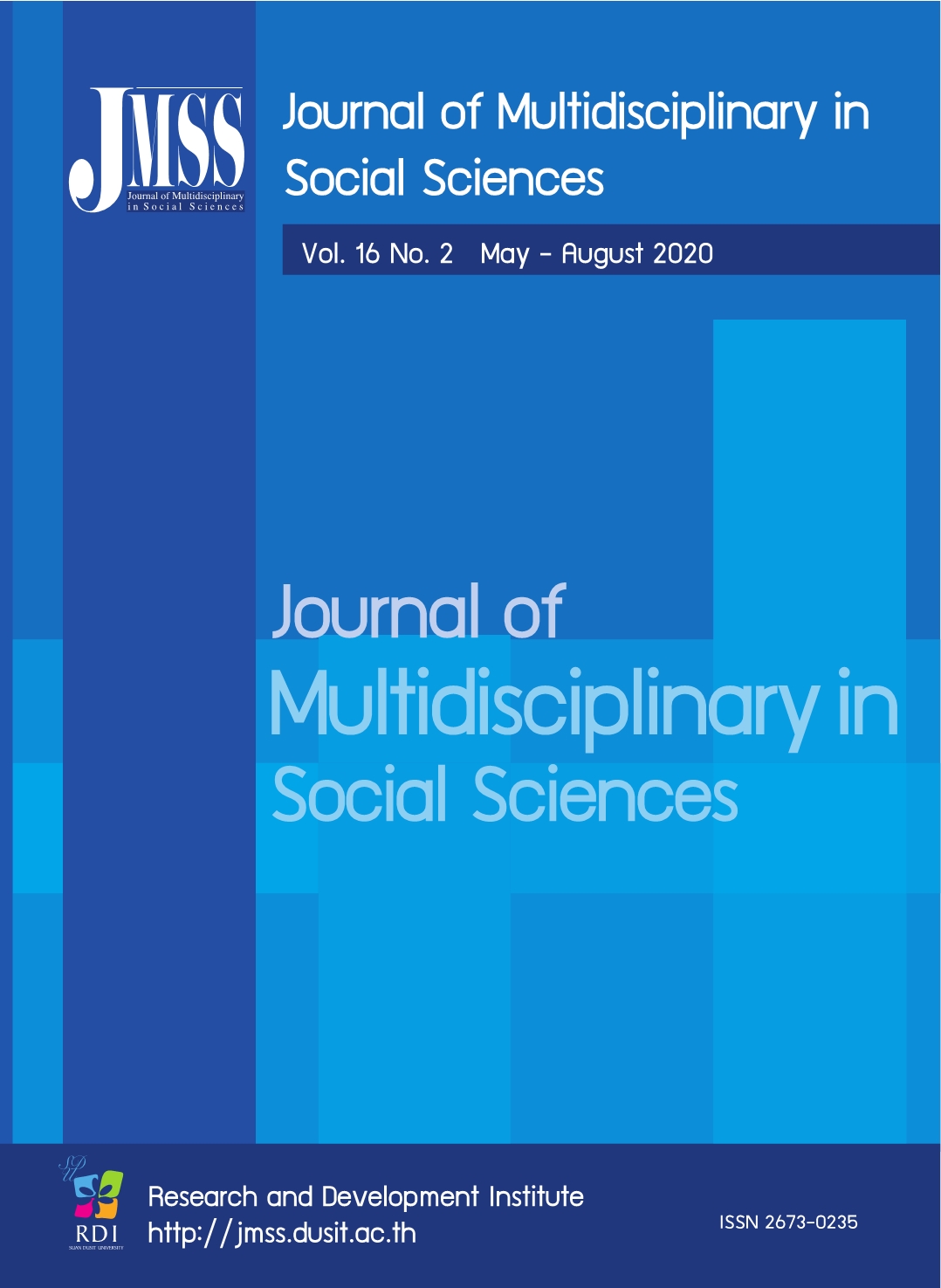Structural Model of the Impact of Autonomy and Career Satisfaction on Job Satisfaction in Teleworking Context
Keywords:
Autonomy, Career satisfaction, Job satisfaction, Structural equation modelAbstract
The study of a structural model evaluating the impact of autonomy and career satisfaction on job satisfaction in teleworking context aimed to scrutinize the casual relationship among autonomy, career satisfaction and job satisfaction. The research used a 2-step structural equation modelling approach based on review of related literature. The population and samples were selected from teleworking professionals in Thailand. Research tools were questionnaire with rating scales and a simple random sampling. The model fit, reliability and validity were analyzed by using a confirmatory factor analysis technique. A causal relationship was analyzed by structural model and path analysis. The results portrayed that the model was fitted with empirical data and yielded moderate reliability and validity. The results show a positive direct effect of autonomy to job satisfaction. Moreover, career satisfaction played as a partial mediator or indirect effect on the relationship between autonomy and job satisfaction. Based on the results, the organization should promote a high level of autonomy in a teleworking environment to ensure job satisfaction. Future research should be qualitative or mixed method to reach deep down for a richer result interpretation and a cohort or longitudinal research should be done so as to scrutinize these effects in the long term.
References
Bagozzi R.P., & Yi Y. (1988). On the evaluation of structural equation model. Journal of Academy of Marketing Science, 16(1), 74-94.
Browne, M. W., & Cudeck, R. (1993). Alternative ways of assessing model fit In: Bollen KA, Long JS, editors. Testing structural equation models. Beverly Hills: Sage.
Demerouti, E., Bakker, A. B., & Leiter, M. (2014). Burnout and job performance: The moderating role of selection, optimization, and compensation strategies. Journal of occupational health psychology, 19(1), 96.
Demoussis, M., & Giannakopoulos, N. (2007). Exploring job satisfaction in private and public employment: Empirical evidence from Greece. Labour, 21(2), 333- 359.
Fornell, C., & Larcker, D. (1981). Evaluating structural equation models with unobserved variable and measurement error. Journal of Marketing Research, 18(1), 39-50.
Gajendran, R. S., & Harrison, D. A. (2007). The good, the bad, and the unknown about telecommuting: Meta-analysis of psychological mediators and individual consequences. Journal of applied psychology, 92(6), 1524.
Grandey, A., Cordeiro, B., & Crouter, A. (2005). A longitudinal and multi-source test of the work-family conflict and job satisfaction relationship. Journal of Occupational and Organizational Psychology, 78(3), 305-323.
Greenhaus, J. H., Parasuraman, S., & Wormley, W. M. (1990). Effects of race on organizational experiences, job performance evaluations, and career outcomes. Academy of Management Journal, 33(1), 64-86.
Hair, J. F., Black, W. C., Babin, B. J., & Anderson, R. E. (2013). Multivariate data analysis. Pearson new international edition. London: Pearson Higher Ed.
Hoff, T., Carabetta, S., & Collinson, G. E. (2019). Satisfaction, burnout, and turnover among nurse practitioners and physician assistants: a review of the empirical literature. Medical Care Research and Review, 76(1), 3-31.
Inauen, A., Jenny, G. J., & Bauer, G. F. (2015). Discriminating Five Forms of Job Satisfaction: Investigating Their Relevance for Occupational Health Research and Practice. Occupational Health Research and Practice Psychology, 6(1), 138-150.
Joo, B. B., & Park, S. (2010). Career satisfaction, organizational commitment, and turnover intention. Leadership & Organization Development Journal, 7(2), 25-38
Lesener, T., Gusy, B., & Wolter, C. (2019). The job demandsresources model: A meta-analytic review of longitudinal studies. Work & Stress, 33(1), 76-103.
Narayanan, L., Menon, S., & Plaisent, M. (2017). Telecommuting: The Work Anywhere, Anyplace, Anytime Organization in the 21st Century. Journal of Marketing and Management, 15(2), 112-125.
R Core Team (2019). R: A language and environment for statistical computing. R Foundation for Statistical Computing, Vienna, Austria. Retrieved January 31, 2019, from http://www.R-project.org/
Rastogi, M., Karatepe, O. M., & Mehmetoglu, M. (2019). Linking resources to career satisfaction through work– family enrichment. The Service Industries Journal, 39(11–12), 855-876.
Ryan, R. M., & Deci, E. L. (2000). Self-determination theory and the facilitation of intrinsic motivation, social development, and well-being. American psychologist, 55(1), 68.
Van den Broeck, A., Vansteenkiste, M., De Witte, H., Soenens, B., & Lens, W. (2010). Capturing autonomy, competence, and relatedness at work: Construction and initial validation of the Work-related Basic Need Satisfaction scale. Journal of Occupational and Organizational Psychology, 83(4), 981-1002.
Wang, Y. De, & Hsieh, H. H. (2012). Toward a Better Understanding of the Link Between Ethical Climate and Job Satisfaction: A Multilevel Analysis. Journal of Business Ethics, 105(4), 535-545.
Weiss, D. J., Dawis, R. V., & England, G. W. (1967). Manual for the Minnesota satisfaction questionnaire: Minnesota studies in vocational rehabilitation. Minneapolis: Industrial Relations Center, University of Minnesota.
Downloads
Published
How to Cite
Issue
Section
License

This work is licensed under a Creative Commons Attribution-NonCommercial-NoDerivatives 4.0 International License.








